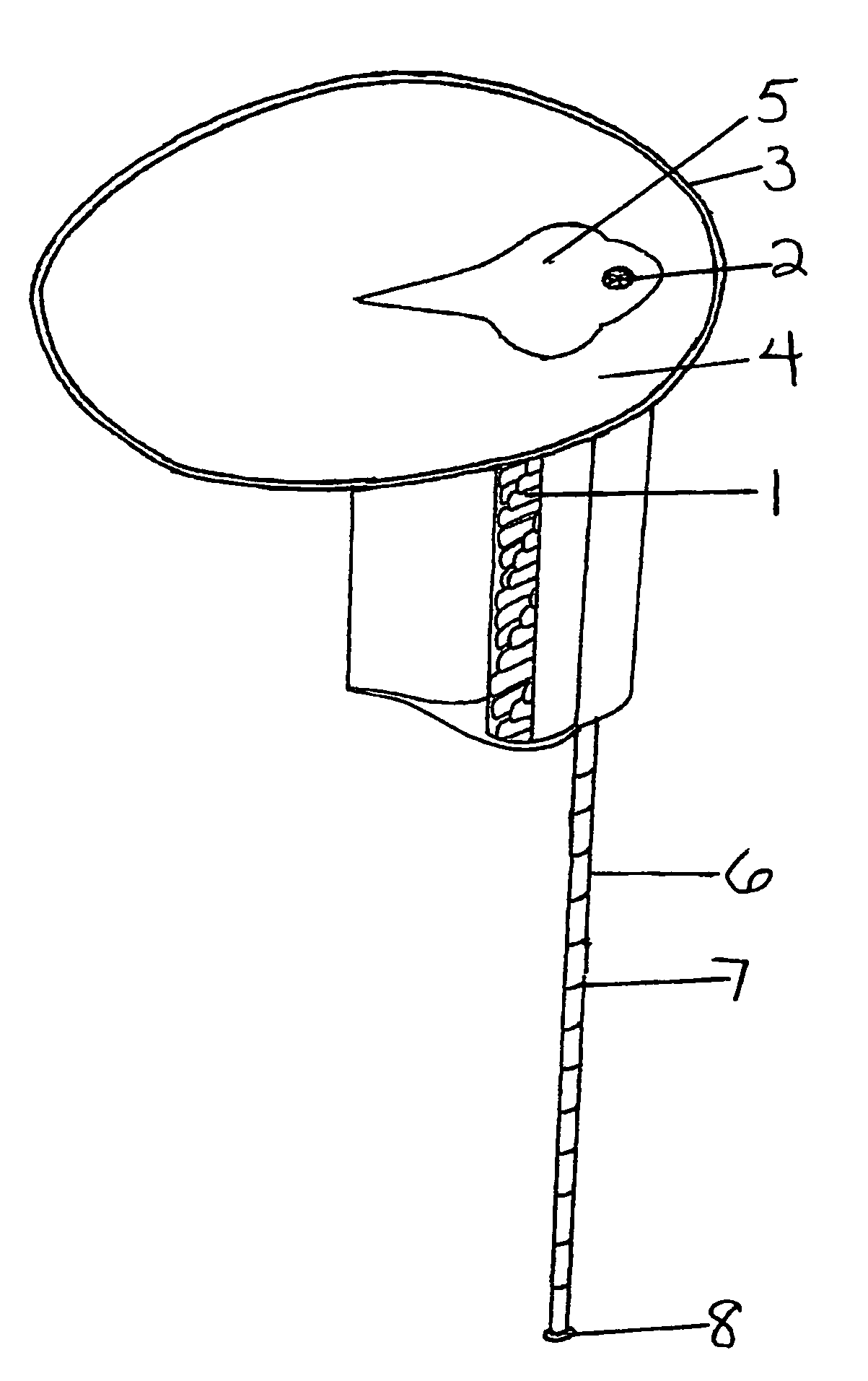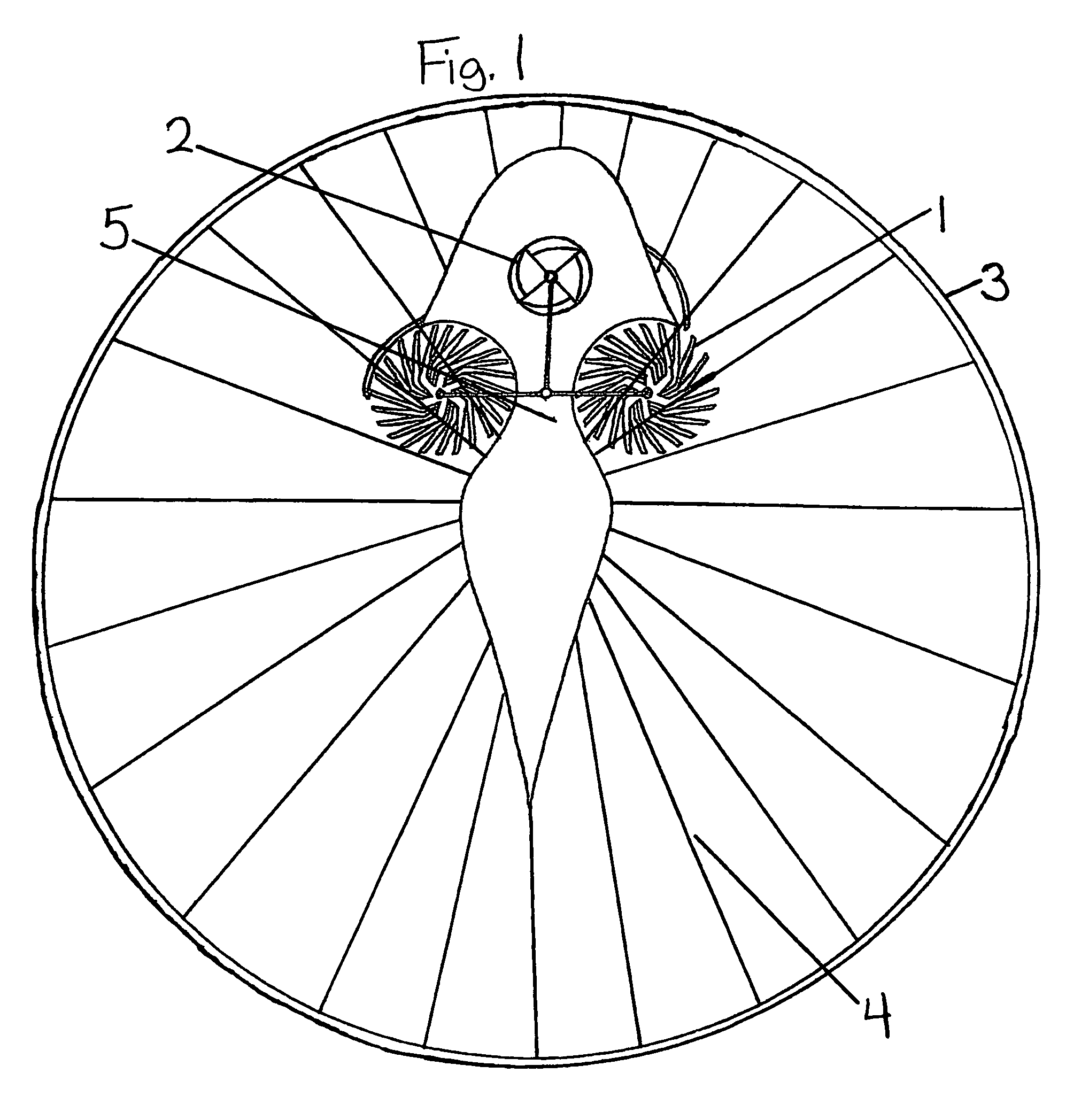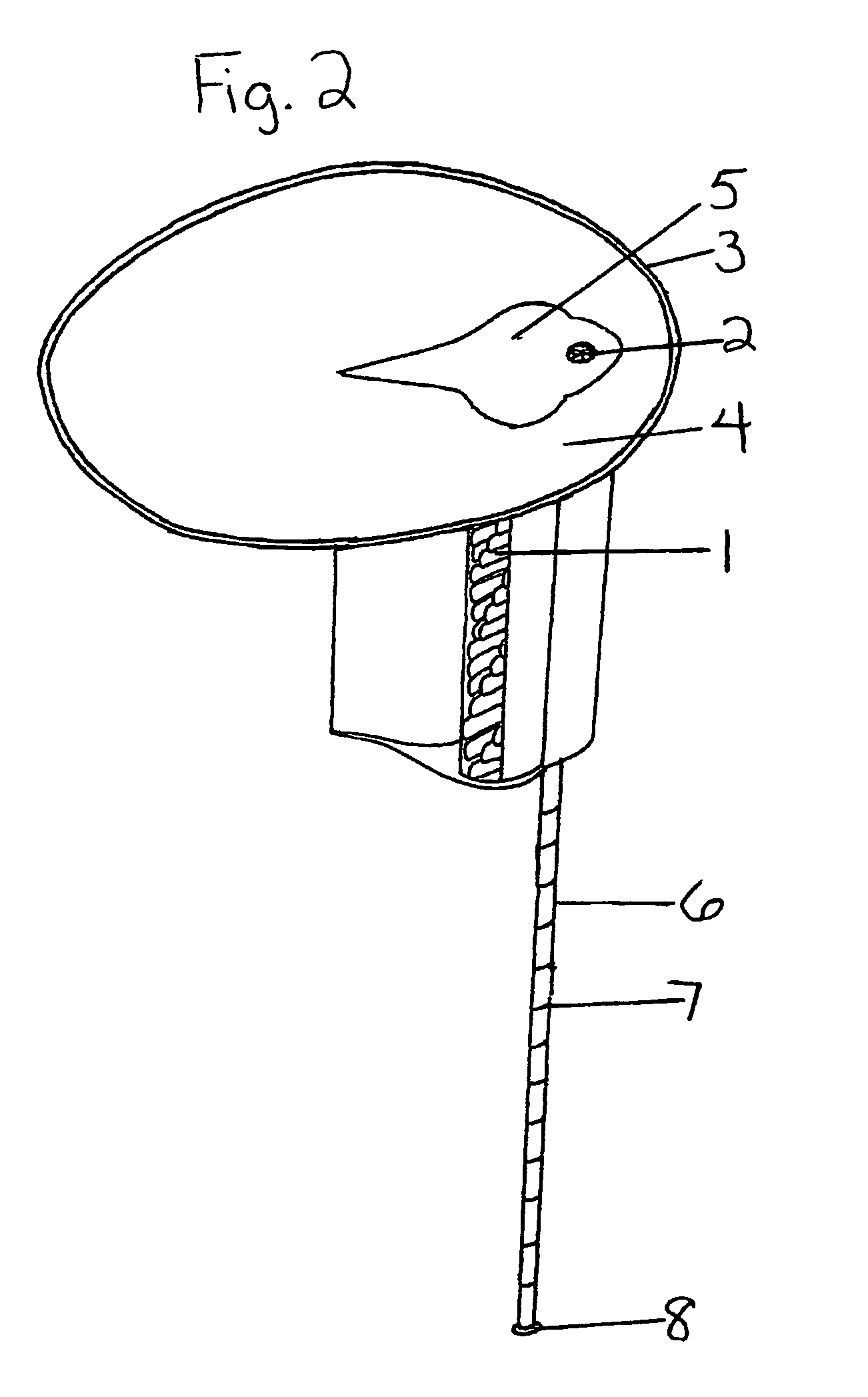Mechanically produced thermocline based ocean temperature regulatory system
a technology of thermocline and regulatory system, which is applied in the direction of instruments, heating types, heat measurement, etc., can solve the problems of reducing the effectiveness of the biological pump, and achieve the effects of stimulating the growth of phytoplankton, increasing the level of phytoplankton, and decreasing the amount of carbonic acid dissolved
- Summary
- Abstract
- Description
- Claims
- Application Information
AI Technical Summary
Benefits of technology
Problems solved by technology
Method used
Image
Examples
Embodiment Construction
[0018]The Mechanically Produced Thermocline Based Ocean Temperature Regulatory System is a system and a process to pump cold water from a depth sufficient enough to produce a thermocline on the surface of the ocean.
[0019]The difference in temperature and salinity between the surface water and the water pumped up from the deep keeps the two from mixing. The temperature and salinity differences between the water from a depth of 2000 to 3000 ft and the water on the surface in most tropical and subtropical seas is sufficient to create a thermocline.
[0020]The system to create the thermocline consists of a floating pump surrounded by a separation bather, with a feed tube attached to the bottom of the pump. The pump in the system that we have designed is powered by ocean currents, but the concept is not limited to the use of our pump. The pump we have designed is a floating vessel with turbines set into each of its two sides. The turbines are directly geared to an impeller. The impeller pu...
PUM
 Login to View More
Login to View More Abstract
Description
Claims
Application Information
 Login to View More
Login to View More - R&D
- Intellectual Property
- Life Sciences
- Materials
- Tech Scout
- Unparalleled Data Quality
- Higher Quality Content
- 60% Fewer Hallucinations
Browse by: Latest US Patents, China's latest patents, Technical Efficacy Thesaurus, Application Domain, Technology Topic, Popular Technical Reports.
© 2025 PatSnap. All rights reserved.Legal|Privacy policy|Modern Slavery Act Transparency Statement|Sitemap|About US| Contact US: help@patsnap.com



